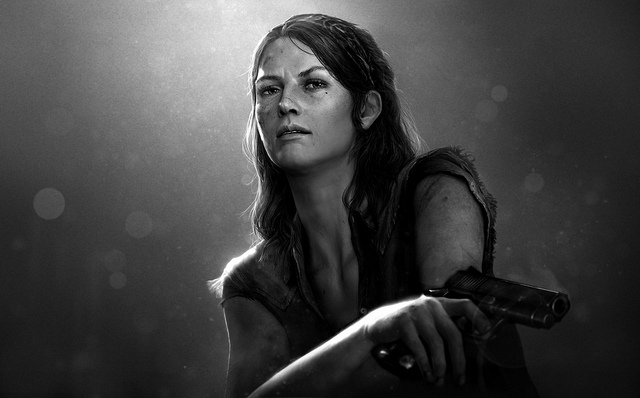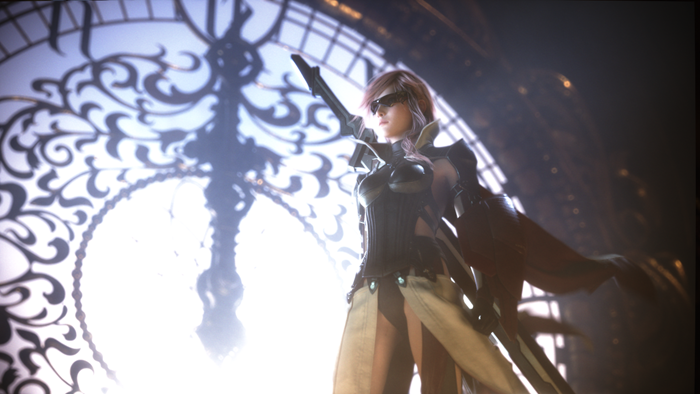Female Game Characters Are Becoming Less Sexualised And More Characterised
It began with the 2013 re-modelling of Lara Croft; a dawning upon me which sent shivers of gaming gladness through my very being… and I’m not talking about the sight of her 36 double D’s. Oh no. This gladness had more to do with the fact that her double D’s had mysteriously deflated into more modest mammaries. This, coupled with the disappearance of Lara’s Playboy posturing made the game less like ‘Boob Raider’ and more like… well, Tomb Raider.
This not only goes for the double D defying Miss Croft, but also for a lot of other female video games characters popping up (and not popping out) recently. There also seems to be an up and coming trend for non-female stereotypes. For example, I nearly cried tears of joy when I was introduced to Neil Druckman’s female characters in ‘The Last of Us’; they are seriously fleshed-out femmes… and I don’t mean in the visual sense. This is all down to intelligent characterisation – making the characters REAL. After all, society has been full of “masculine” women for decades, yet strangely enough is a new phenomenon in video games.
So why, in an industry that caters for a predominantly male audience, are female games characters becoming less sexualised and more characterised when sex is what sells? Could I be too naïve in suggesting that the industry and its consumers are becoming bored by female games characters where their only personality lies in an ample bosom, or that their only purpose of existing is for that all too clichéd ‘damsel in distress’ dilemma? It’s taken up until now for the video games industry to realise that these are not real representations of women, and that each woman has an inner warrior and more of a purpose in life than owning a couple of pert protrusions.
Square Enix have made this change recently with their first female protagonist Claire ‘Lightning’ Farron (Ok, we’ll forgive the pink hair gender stereotype, but she hardly dances among the flowers, does she?); a female with an applied characterisation that goes way deeper than the average Final Fantasy love-struck limpet. Instead, players are introduced to a woman who not only has deeper conflicts than the above example, but a woman who can wield serious swords and break numerous balls. And no, I haven’t forgotten about the various skimpy outfits you can dress Lightning in in ‘Lightning Returns’. While these may degrade her visual character, at least the player is given a choice as to what outfit she can wear. I like this idea of choice, even though I never made Lightning suffer by forcing her to wear the ‘red devil’ costume (just think Ann Summers here). But for me as a gamer, it was refreshing to see Lightning’s inner conflicts stand out more than her lady lumps.
It seems the realisation has dawned upon some games companies that a female character can still own some kind of sex appeal without explicitly flaunting her sexuality. Let’s take Tess from ‘The Last of Us’ as an example. There she is; bruised and bloody from fighting with groups of men, very grubby, probably extremely smelly, and not an ounce of sexual flaunting in sight. Yet many people I have spoken to and whose comments I have read in forums find this woman exceptionally hot. Why? I believe the answer is the application of a personality, realism and subtlety to her character. Despite fighting with men and toting guns, Tess still shows snippets of femininity. At a few points in the game, I felt that she was almost motherly towards Ellie, and certainly cared about her more than Joel appeared to at the time.
Now, bangers and bouncing bum cheeks may get some people off, but how long does the thrill last? A few minutes? A character with more depth certainly gets the mind working and leaves more to the imagination, creating appeal and longevity for that character. Sure enough, Lara Croft may have been around for years, but where was she in that slump before her less sexualised reboot?
Perhaps it’s the same as the human sexual relationship. When we want a short-term bit of “fun” with no commitment, it’s usually the outer image that attracts us. A potential life partner goes deeper; their character – who they are as a person is what is attractive, creating a relationship that will be on a more intense and hopefully longer lasting level. Maybe gamers want this same kind of relationship with their characters – and it doesn’t even have to be in a sexual sense. A character that we can have that intense, emotional connection with through their expression of character and sharing their experiences will no doubt lead to a more fulfilling and longer lasting gaming experience.
Don’t get me wrong, I’m not calling for a complete overhaul of sexualised female characters, I just want to see less degradation. And as I have explained, subtlety is sexy. A female character can still be damn hot without explicitly flaunting it. If a character is intended to be sexually appealing then this is the way to go.
The video games industry though, still has a way to go when it comes to characterising female characters, but at least it’s getting there.




